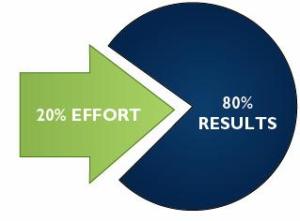
So many times you may have heard, “you become what you think about most often”. Hidden within that statement is a key component that many of us forget – it all comes down to your personal expectation as to whether or not you’re going to ultimately succeed.
That’s where it all starts. You’re not going to get anything if you don’t work hard to achieve it. But you’re not going to work hard in the first place unless you have a strong enough expectation that you’ll be successful. This is how life works. Your motivation to take action, and to follow through until the job is done, is directly proportional to your belief that you will succeed.
Food for thought:
When you believe that success is going to be the end result of you never giving up, then you are going to attack your objective with a greater passion. You’re going to be excited about what you’re doing, because you know that it matters. You know that whatever it is you’re doing, it will eventually translate into the result you want.
When you believe strongly enough that you will succeed at something, success is practically guaranteed – not because your belief creates the result, but because you don’t give up taking dedicated action until you get what you want.
The perspective of certainty gives you the ability to see obstacles as challenges that fuel your growth. Focus on “How can I, instead of Why can’t I … ?” The late author Dorothea Brande, in her book, Wake Up & Live, wrote, “Live as though it was impossible to fail.”
You’ll know when what you decide to do is the right thing – you just need to go for it with proper planning. Just don’t get “analysis paralysis” and never get started.
If you’ve got a major goal you want to achieve, here are 3 things to keep in mind:
1. You have to have the expectation that you (specifically YOU) can achieve this goal. People typically have a lot easier time believing something is “possible” than believing it’s possible for them.” They don’t fully believe that they will be capable of achieving a goal because they are missing something – the time, the talent, the resources, whatever.
2. You have to have the expectation that you will close the resource gap, no matter how wide it is. How can you compete with a dyslexic college kid like Richard Branson who took on the music industry and the airlines (and succeeded). A lack of time, money, connections … it doesn’t matter, because there’s a number of creative solutions out there that you’re going to come up with to overcome them. If you have the expectation that it will eventually be resolved, guess what’s going to happen.
3. You have to have the expectation that every action you take matters. Recognize that action accumulates – that pyramids are built brick by brick. “Live as though it was impossible to fail.” Become a dreamer again.




